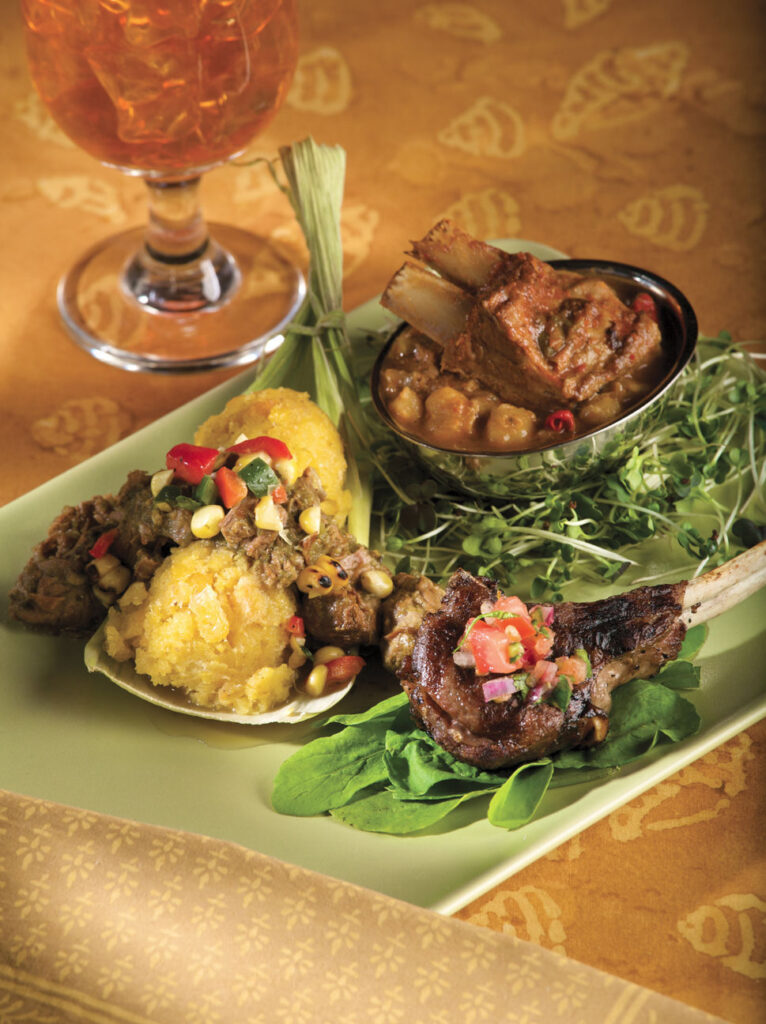Northern Arizona’s Mountain Living Magazine, February 2021
Story by Gail G. Collins
Grandeur never fades. In the case of the landmark La Posada Hotel, it has endured some humbling moments, but its prominence continues, true to its original vision.
Fred Harvey Company completed the building of La Posada Hotel in 1930 to serve as the “Resting Place,” as its Spanish name imparts. Purposefully situated as a resort for northern Arizona, the hotel proffered the luxury of linens, china, crystal and, importantly, the flawless service synonymous with Harvey, who “civilized the West.” The hospitality tycoon developed and ran the hotels along the Santa Fe Railroad, marking La Posada as the finest in the Southwest.
Grand Canyon artist and architect Mary Colter worked for Fred Harvey Company, designing everything from La Posada’s functional layout to its maids’ costumes and niche tableware. A fantasy backstory projected the property as a Spanish landowner’s grand hacienda, and attention to detail in art and artifice enhanced that image. Colter also fashioned the railroad dining car for the Super Chief, which ran from Chicago to Los Angeles, dubbing it the Turquoise Room. Starlets and icons, such as Shirley Temple, Amelia Earhart, President Harry Truman and Albert Einstein, embraced the chic transportation.
La Posada closed in 1957, then was gutted and turned into offices for the railroad. A few times, it was slated for demolition, before it was rescued by in 1997 by Allen Affeldt and wife Tina Mion and restoration began.
In 2000, Affeldt invited John and Patricia Sharpe to explore the renovation of the historic property. It needed a restaurant comparable to its celebrated caliber. Sharpe left four acclaimed restaurants and a 25-year culinary career in Orange County and moved to Winslow.
The location was as appealing to Sharpe as it had been to Harvey. An interstate highway, the romance of Route 66, Grand Canyon National Park and other international tourist sites drew millions of annual visitors and lay within a comfortable reach. Still, no destination dining existed between Flagstaff and Albuquerque.
As chef-owner, Sharpe executed the vision for the Turquoise Room’s stylish features, from exposed beams, stained glass, pressed tin and tile to carved chairs. Patricia added imaginative influence with leather-topped tables and painted vintage placemats.
Staffing from a small pool was difficult. The team was trained from the ground up, and a strong crew endures.
“People thought we wouldn’t make it,” Sharpe said of when the Turquoise Room opened on Oct. 10, 2000. With a wry smiled, he added, “It was all we could do to keep up with the people coming through the door.”
The Turquoise Room’s menu melds traditional Southwest flavors with artistic arc. The braised Churro lamb is a stalwart example and found in a host of dishes, like Native cassoulet with elk sausage, lamb chop and duck confit.
To spearhead local sourcing in California, Sharpe drove to San Juan Capistrano and San Clemente for direct access to farmers. His interest in Native American culinary history prompted him to host Indigenous feasts at Bowers Museum of Cultural Art in Santa Ana. In Arizona, he allied with Gary Nabhan at the Center for Sustainable Environments at Northern Arizona University to prosper relationships and venues, like Flagstaff Community Market.
Sharpe is a chef with a conscience. He built bonds with local tribes—the Tohono O’odham, Navajo, Hopi and Zuni—to provide ancient produce, like tepary beans, cholla buds, acorns, and products, like Churro sheep and delicate piki bread, to complement authentic recipes. Try the bison ribs or red posole with lamb and pork.
This attention to detail earned the Turquoise Room such accolades as Condé Naste’s Best Food Award, a listing among Arizona Highway’s Best 75 Restaurants and the New York Times highlight of rediscovered glory among many more. In 2012, the James Beard Foundation announced Sharpe as a semi-finalist for Best Chef.
On Oct. 1, 2020, Sharpe retired from 20 years in his creative kitchen. He praised Patricia’s backing and recognized diners’ special connections. In the last months, patrons savored a meal, shook Sharpe’s hand and offered thanks.
“The important thing is to support our team,” Sharpe said. “They are the success of this restaurant—they execute.”
Rest assured, this gem is in the capable hands of Chef Jesus Nuñez, Sharpe’s right-hand man of 33 years, and an accomplished staff. The humble chef is driving the menu in a delicious direction, while building on its Southwest strengths.
General Manager Johnny Jackson III confirmed longtime guests are delighted with the host of persistent favorites alongside fresh approaches.
“People come here to create great memories, and this has continued,” he said. “Last year brought a younger crowd of families to this magical place, and we’re inspired and hopeful.”
Chef Nuñez hails from Jalisco, Mexico, and blends his background with the menu’s assets. For Thanksgiving, Nuñez prepared a Latin turkey, marinating the fowl in achiote paste, featuring chili, garlic and cumin with sweet prune sauce, which garnered rave reviews. Other additionsto the line-up include pork chops in tamarind sauce and grilled fresh trout with roasted vegetables, a popular pick.
“We will continue the same traditions in level of service, quality of food and local sourcing, so nothing has changed,” Nuñez assured. “The groundwork for this exceptional hotel has been laid, and we will keep the train on the track.”
So, the grandeur guests expect from their beloved La Posada’s Turquoise Room carries forward, even as new relationships are forged. NAMLM
If you go
The Turquoise Room at La Posada is located at 305 E. Second St. in Winslow. Visit www.theturquoiseroom.net to browse the menu, make a reservation and learn more.
Price: $$-$$$


